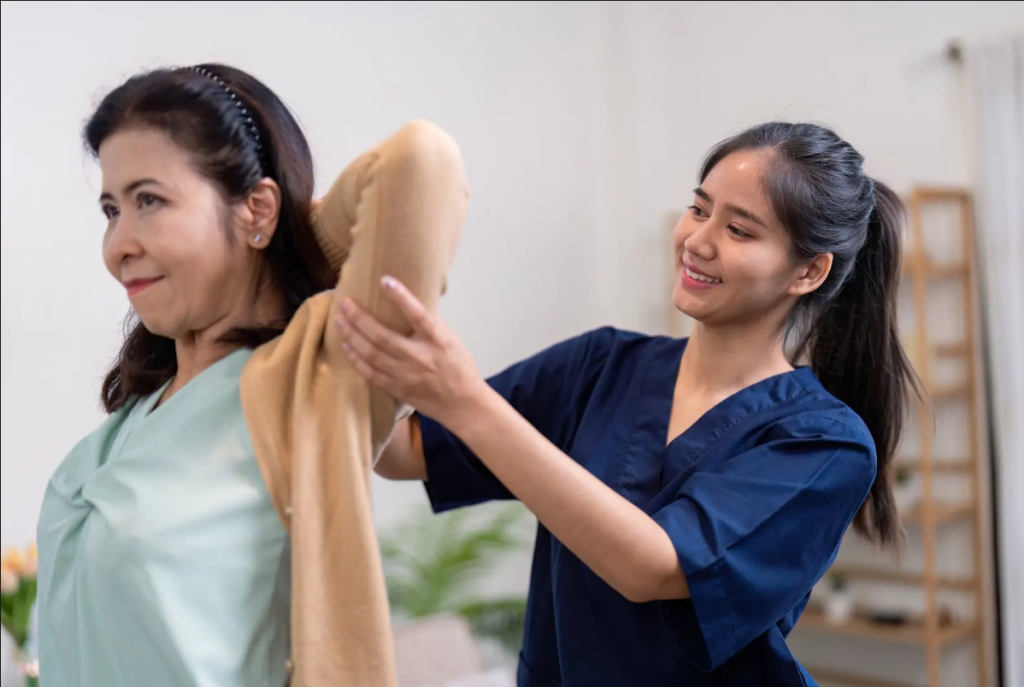When someone survives a stroke, the relief is immediate—but recovery is just beginning. For many families, the next big question is: What happens after the hospital discharge? While some stroke survivors enter inpatient rehab or skilled nursing, a growing number are healing more successfully in their own homes.
There’s a reason for that. Stroke recovery at home gives patients the chance to rebuild strength, routines, and independence in the place where they feel most comfortable. It also allows care to be personalized and adjusted in real time—something that’s often harder to achieve in institutional settings.
This article explores why the home environment may offer a stronger foundation for long-term stroke recovery, what factors to consider, and how families can support their loved ones in this critical stage of healing.
The Hidden Benefits of Recovering at Home
Being at home does more than ease emotional stress—it plays a practical role in physical and cognitive recovery. Here’s why:
- Familiar surroundings reduce confusion. After a stroke, patients may struggle with memory, mobility, or vision. Being in a known space limits disorientation and improves confidence.
- Routines rebuild faster. Eating, dressing, and grooming happen in the same place they always have, which helps re-establish daily habits.
- More personalized attention. With one-on-one home care or family involvement, the patient isn’t waiting in line for help.
- Lower exposure to infections. Hospitals and nursing homes come with increased infection risks—especially for those with weakened immune systems.
When coordinated properly, recovery at home can result in greater progress with fewer complications.
Why Stroke Recovery Requires a Specific Kind of Support
Stroke affects each person differently. Some lose movement on one side. Others struggle with speech, memory, or problem-solving. That means no two recovery plans should look the same.
Home care that supports stroke recovery needs to be highly personalized and may include:
- Rehabilitative therapy (physical, occupational, and speech)
- Assistance with daily living (bathing, dressing, cooking)
- Medication management
- Fall prevention strategies
- Cognitive support
In home-based recovery, care is tailored to what the person can do now and gradually builds toward what they hope to regain. The environment plays a major role too—navigating the same kitchen, stairs, and bathroom helps reinforce functional gains in a meaningful way.
When Is Home the Right Choice?
Not all stroke survivors are ready to go home immediately. But when the medical team approves discharge, and basic safety is in place, recovery at home becomes a realistic—and often beneficial—option. Consider it especially when:
- The person is medically stable
- Family or home health support is available
- The home can be modified for mobility and safety needs
- Therapists can visit or virtual care is available
For example, in some agencies like InTouch Home Healthcare Agency, care plans for stroke survivors are designed specifically for the home setting. These plans can include a mix of therapy, skilled nursing, and support with daily tasks—offering a bridge between hospital-level care and full independence.
Emotional Recovery Happens at Home, Too
Stroke recovery isn’t just about regaining physical function. Emotional healing is just as important—and often overlooked.
At home, patients are surrounded by familiar voices, routines, and personal belongings. This sense of control can boost motivation and reduce anxiety. They’re also more likely to engage in everyday conversations, hobbies, and social interactions—all of which support brain health and well-being.
Being in a facility may provide clinical supervision, but it often lacks that personal connection. Home, by contrast, promotes a feeling of normalcy and purpose—both crucial in the recovery process.
How to Set Up the Right Support System
Recovery at home works best when a strong care team is involved. This doesn’t always mean full-time nursing—it could be a mix of:
- Skilled nursing or therapy visits
- Help from trained caregivers or aides
- Involvement of family members or friends
- Modifications to the home environment
To get started, many families search for healthcare services near you that specialize in stroke recovery or neurological rehab. These providers can assess needs, make safety recommendations, and help build a plan that fits the patient’s goals and resources.
Conclusion
Healing after a stroke takes time, patience, and the right kind of support. For many survivors, the best place to regain strength, independence, and confidence isn’t a facility—it’s their own home.
With a structured plan, ongoing therapy, and compassionate care, stroke recovery at home can empower patients to move forward in a setting that supports both physical progress and emotional stability.
If your loved one is preparing for discharge, now is the time to explore home-based options and create a path toward lasting recovery—one that begins right at the front door.

